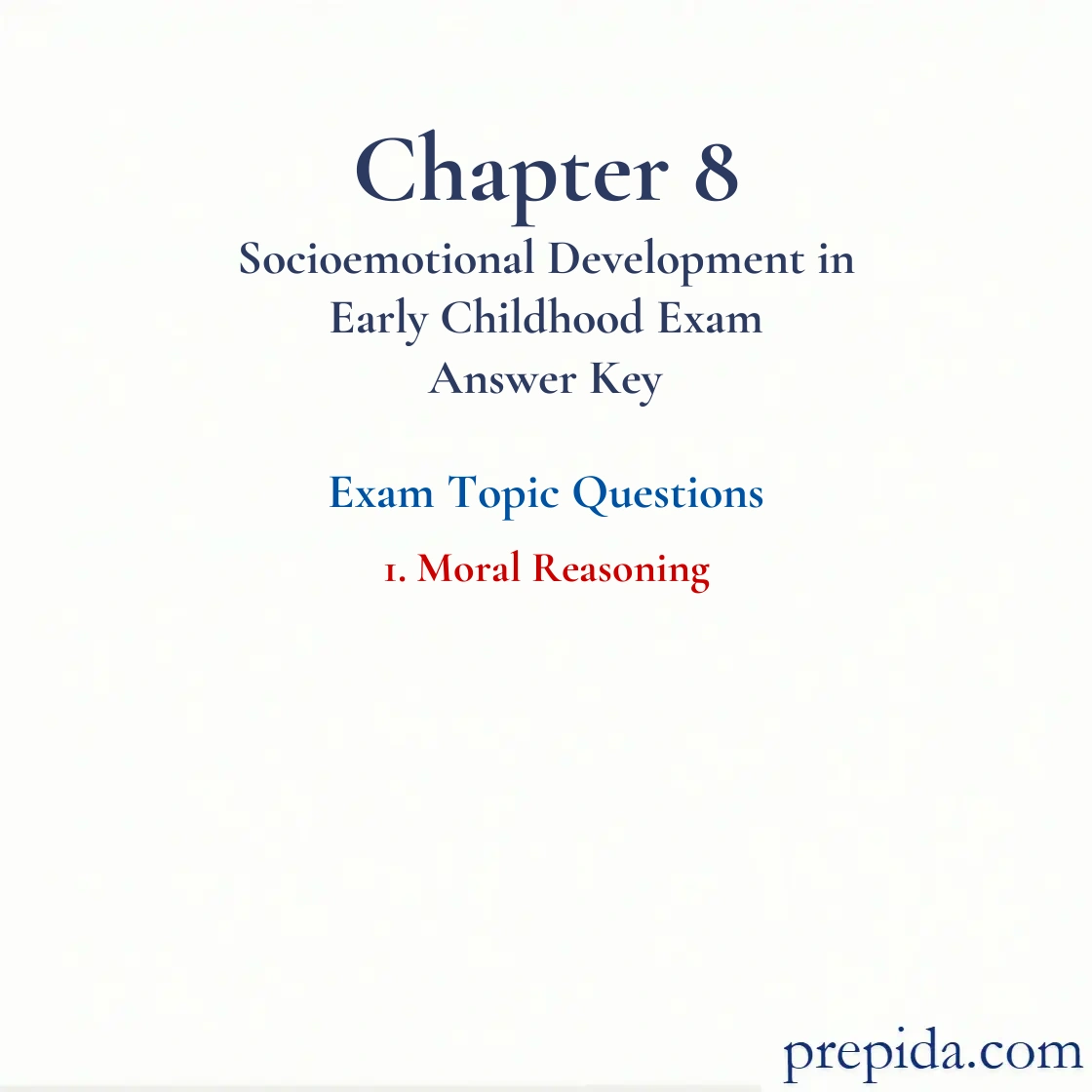
Susan, a 5-year-old, thinks of justice and rules as unchangeable properties of the world, removed from the control of people. In the context of Jean Piaget's theory of moral development, Susan is most likely in the stage of moral reasoning known as
- heteronomous morality.
- empathy.
- autonomous morality.
- sympathy.
Heteronomous Morality: The first stage of moral development in Piaget’s theory, occurring from approximately 4 to 7 years of age. Justice and rules are conceived of as unchangeable properties of the world, removed from the control of people.
From about ________ years of age, children display heteronomous morality.
- 1 to 3
- 4 to 7
- 10 to 12
- 2 to 4
Heteronomous Morality: The first stage of moral development in Piaget’s theory, occurring from approximately 4 to 7 years of age. Justice and rules are conceived of as unchangeable properties of the world, removed from the control of people.
Which of the following is the first stage of Piaget's theory of moral development?
- autonomous morality
- initiative versus guilt
- heteronomous morality
- autonomy versus shame and doubt
Heteronomous Morality: The first stage of moral development in Piaget’s theory, occurring from approximately 4 to 7 years of age. Justice and rules are conceived of as unchangeable properties of the world, removed from the control of people.
The ability to discern another's inner psychological state is known as
- correspondence.
- congruence.
- perspective taking.
- nurturance.
Perspective Taking: The social cognitive process involved in assuming the perspective of others and understanding their thoughts and feelings.
When her mother asks Selena why she feels so sad, Selena says it is because her best friend just lost her puppy. Selena is exhibiting
- guilt.
- empathy.
- correspondence.
- lack of perspective taking.
MTOR Pathway: A cellular pathway involving the regulation of growth and metabolism that has been proposed as a key aspect of longevity.
Which of the following terms refers to responding to another person's feelings with an emotion that echoes the other's feelings?
- anxiety
- empathy
- coaching
- modeling
MTOR Pathway: A cellular pathway involving the regulation of growth and metabolism that has been proposed as a key aspect of longevity.
Which of the following aspects of moral development most likely involves anxiety and guilt?
- moral reasoning
- moral thoughts
- moral behavior
- moral feelings
Moral Development: Development that involves thoughts, feelings, and behaviors regarding rules and conventions about what people should do in their interactions with other people.
According to Freud, the moral element of personality is called the
- id.
- superid.
- ego.
- superego.
Which of the following approaches holds that the processes of reinforcement, punishment, and imitation explain the development of moral behavior?
- freud's psychoanalytic approach
- the evolutionary psychology approach
- the behavioral and social cognitive approach
- the biological approach
Social Cognitive Theory: The view of psychologists who emphasize behavior, environment, and cognition as the key factors in development.
Which of the following involves thoughts, feelings, and behaviors regarding rules and conventions about what people should do in their interactions with other people?
- immanent justice
- superego
- moral development
- pragmatism
Moral Development: Development that involves thoughts, feelings, and behaviors regarding rules and conventions about what people should do in their interactions with other people.
Dante is a 10-year-old boy who likes to play soccer during recess. One day, a friend teaches him a different set of rules about the game. Dante accepts the rules and now plays soccer in a new way. Dante is in which stage of moral development?
- autonomous morality
- heteronomous morality
- basic morality
- extended morality
Autonomous Morality: In Piaget’s theory, older children (about 10 years of age and older) become aware that rules and laws are created by people and that in judging an action one should consider the actor’s intentions as well as the consequences.